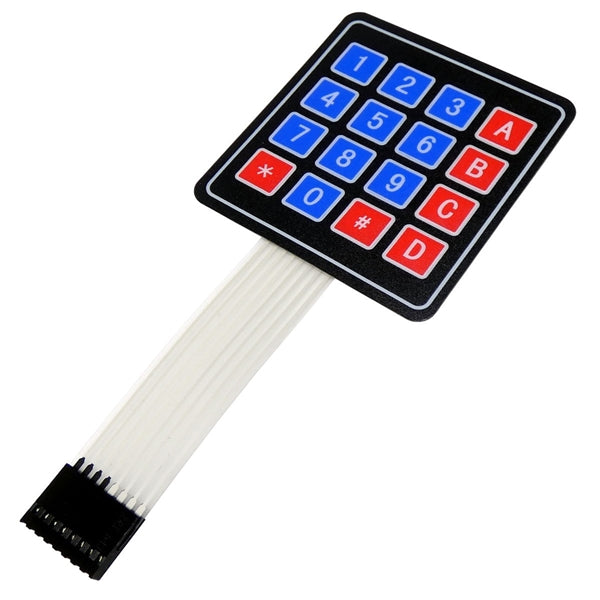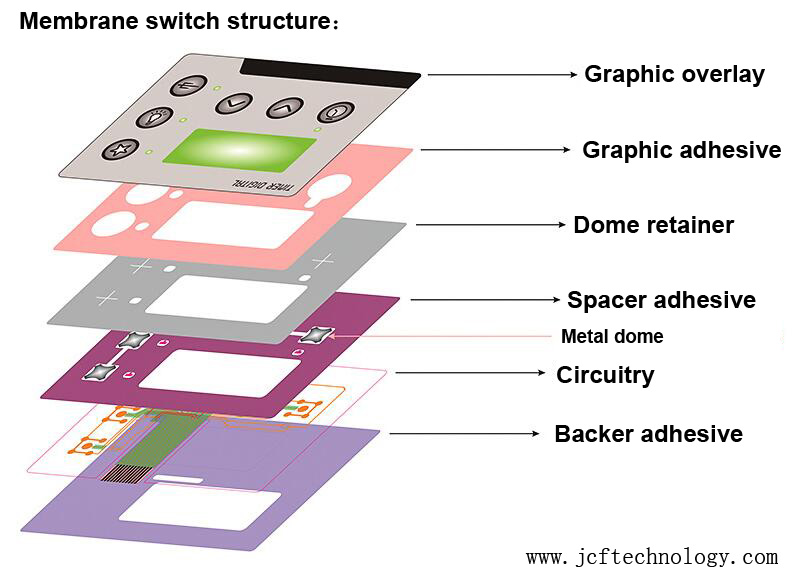Why Membrane Switches are Ideal for Durability and Performance
Why Membrane Switches are Ideal for Durability and Performance
Blog Article
Comprehending Membrane Switches: The Secret to Resilient and Reliable Controls

What Are Membrane Buttons?
Membrane buttons are an innovative remedy in the realm of interface innovation, integrating capability and style effortlessly. These gadgets serve as a user interface between individuals and digital systems, integrating several elements into a small layout. Generally built from adaptable, slim layers of products, membrane layer switches are designed to reply to touch, allowing individuals to communicate with equipment and electronic devices efficiently.
The key components of a membrane switch include a printed circuit layer, visuals overlay, and a spacer layer that prevents unintentional activation. The graphic overlay can be customized to mirror brand identification or customer preferences, improving appearances while ensuring use. Membrane switches are typically made use of in numerous applications, consisting of medical gadgets, customer electronics, and industrial devices, owing to their longevity and resistance to environmental factors such as wetness and dirt.
Among the essential advantages of membrane layer buttons is their capability to endure wear and tear, making them optimal for high-traffic settings. In addition, they are lightweight and call for very little area, enabling innovative designs in item growth. On the whole, membrane layer switches over represent a reliable and useful selection for contemporary digital user interfaces, weding modern technology with user-centric style concepts.
How Membrane Switches Work
The operation of membrane layer switches over joints on a simple yet efficient mechanism that converts user input right into digital signals. When an individual presses the button, the leading layer flaws, enabling a conductive element in the circuit layer to make contact with a matching conductive pad on the underside of the graphic overlay.
The layout of membrane switches can differ, yet they usually integrate domes or responsive elements to offer feedback to the user, improving the overall experience - membrane switch. The materials made use of in membrane layer switches, such as polyester or polycarbonate, add to their longevity and resistance to ecological factors, including dampness and dirt. Moreover, the published circuits are typically encapsulated, which secures them from damage over time.
Advantages of Membrane Layer Buttons

In addition, membrane layer switches are recognized for their toughness. Built from durable materials, they are immune to dirt, moisture, and physical wear, which substantially extends their life expectancy contrasted to standard mechanical buttons. This longevity makes them specifically ideal for high-traffic environments and applications calling for longevity.
One more considerable advantage is the convenience of cleaning and maintenance. The smooth surface area of membrane layer switches over minimizes dust buildup and is typically unsusceptible spills, making them ideal for settings that need frequent sanitization.
Furthermore, membrane switches offer a streamlined account, resulting in a thinner design that can be incorporated right into various devices without adding bulk. This feature not only boosts the visual charm yet additionally contributes to a more ergonomic item layout.
Applications of Membrane Buttons
Straightforward and functional, membrane layer buttons find applications across a large range of sectors, consisting of clinical gadgets, consumer electronic devices, and industrial devices. In the clinical field, these switches are essential to tools such as diagnostic devices, useful source person tracking systems, and mixture pumps, where integrity and convenience of cleansing are crucial. Their ability to stand up to extreme atmospheres and maintain performance makes them optimal for such applications.

In customer electronics, membrane layer switches are made use of in products like microwaves, washing makers, and remotes - membrane switch. Their streamlined design allows for instinctive individual interfaces, enhancing the total user experience while providing longevity and resistance to deterioration
Industrial devices also gains from membrane layer switches, particularly in control panels for equipment and automation systems. These switches offer security versus dust and dampness, ensuring consistent efficiency in difficult settings. Their personalized attributes permit makers to tailor them to certain operational demands, improving efficiency and capability.
Choosing the Right Membrane Change
When picking a membrane layer button, it is vital to consider different variables that affect performance and viability for certain applications. The key considerations consist of environmental conditions, tactile feedback, toughness, and design specs.
First, assess the operating setting; switches revealed to moisture, chemicals, or extreme temperatures call for certain products to make sure durability and functionality. Next, evaluate the requirement for responsive responses. Depending on individual communication, some applications might gain from a tactile action to verify activation, while others may choose a non-tactile layout for aesthetic factors.
Resilience is an additional important variable; membrane buttons need to be made to stand up to constant usage, influences, and abrasion. Ensure the chosen button can withstand the anticipated lifecycle, specifically in high-usage circumstances.

Final Thought
In final thought, membrane changes offer as crucial parts in the More Help layout of trustworthy and sturdy control systems throughout different sectors. Their portable design, combined with robust building and customizable functions, improves user interaction while making sure durability sought after environments. The flexibility of membrane switches over enables customized options that satisfy details functional demands, strengthening their value in modern innovation. As sectors remain to develop, the relevance of incorporating reliable membrane layer button options can not be overemphasized.
Membrane switches over represent a critical aspect of modern-day user interface style, mixing functionality with resilience in different applications.Membrane buttons are an advanced remedy in the world of individual interface technology, combining performance and style effortlessly. Usually built from adaptable, slim layers of products, membrane layer buttons are made to react to touch, enabling customers to connect with machinery and great post to read digital devices successfully.
The style of membrane buttons can differ, however they often include domes or responsive components to provide responses to the user, boosting the total experience.In final thought, membrane layer switches over offer as important components in the design of reliable and resilient control systems throughout various industries.
Report this page